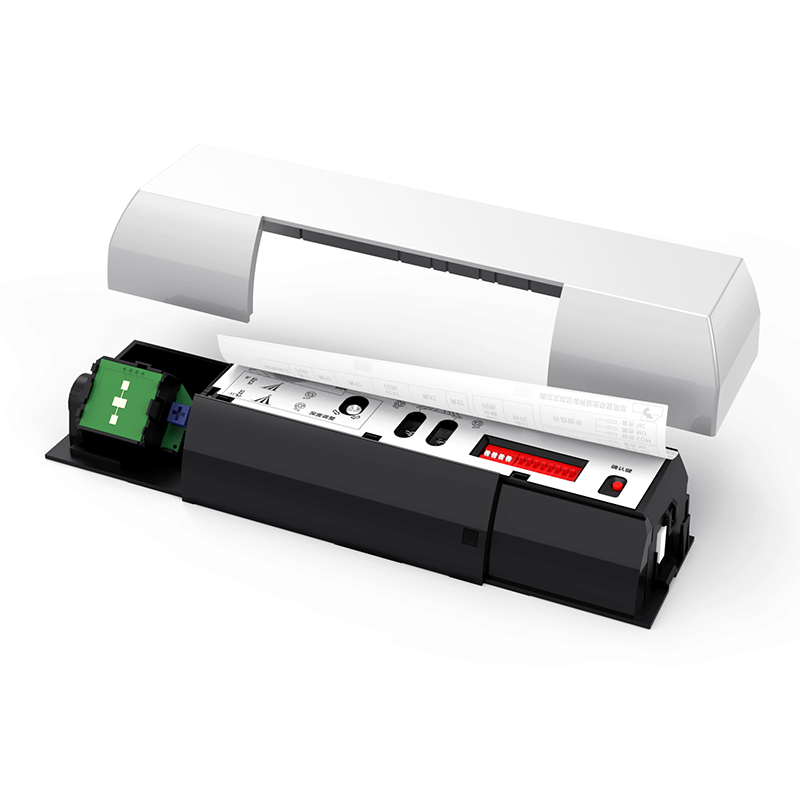How does the installation of an OEM automatic sliding door sensor impact energy efficiency?
In today's environmentally conscious world, energy efficiency is a key consideration for businesses and building owners seeking to reduce operational costs and minimize their carbon footprint. The installation of OEM (Original Equipment Manufacturer) automatic sliding door sensors presents a promising solution to enhance energy efficiency in commercial and public spaces. By intelligently controlling the operation of sliding doors, these sensors offer a range of benefits that contribute to energy conservation and sustainability efforts.

1. Optimized Door Operation: One of the primary ways in which OEM automatic sliding door sensors impact energy efficiency is by optimizing the operation of the doors. Traditional manual or constantly open sliding doors can lead to significant energy wastage by allowing conditioned air to escape and outdoor air to infiltrate the building. Automatic sensors detect the presence of individuals approaching the door and trigger its opening only when necessary, minimizing the duration of open-door cycles and reducing energy losses associated with heating or cooling.
2. Temperature Regulation: Automatic sliding door sensors play a crucial role in maintaining consistent indoor temperatures by preventing thermal bridging. When doors are left open unnecessarily, warm or cool air from the interior mixes with outdoor air, resulting in temperature fluctuations and increased HVAC (Heating, Ventilation, and Air Conditioning) energy consumption. By promptly closing the doors after individuals pass through, sensors help preserve indoor comfort levels and alleviate the workload on HVAC systems, leading to energy savings.
3. Natural Ventilation Management: In certain weather conditions or during non-peak hours, buildings can benefit from natural ventilation to reduce reliance on mechanical cooling or heating systems. OEM automatic sliding door sensors facilitate controlled ventilation by automatically opening doors when outdoor conditions are favorable, such as mild temperatures or low humidity levels. By harnessing natural airflow, buildings can reduce energy consumption associated with mechanical ventilation and improve indoor air quality.
4. Lighting Integration: Many OEM automatic sliding door sensors are equipped with integration capabilities, allowing them to coordinate with lighting systems for enhanced energy efficiency. By detecting movement near the entrance, sensors can trigger the activation or adjustment of lighting levels in the vicinity, ensuring that energy is only consumed when needed. This synchronized operation not only enhances safety and visibility but also minimizes unnecessary energy usage during periods of low activity.
5. Demand-Based Control: Another significant advantage of OEM automatic sliding door sensors is their ability to facilitate demand-based control of building systems. By integrating with building management systems (BMS) or energy management systems (EMS), sensors can provide real-time occupancy data that informs decision-making regarding HVAC operation, lighting schedules, and overall building energy management. This dynamic approach ensures that energy resources are allocated efficiently based on actual occupancy patterns, leading to substantial energy savings over time.
6. Energy Monitoring and Reporting: Modern OEM automatic sliding door sensors often come equipped with energy monitoring and reporting features that enable building owners and managers to track energy usage and identify opportunities for optimization. By analyzing data on door usage, occupancy patterns, and energy consumption, stakeholders can implement targeted strategies to further enhance energy efficiency and sustainability efforts. Additionally, energy reports generated by sensors can be used for compliance purposes or to showcase the environmental performance of the building.
In conclusion, the installation of OEM automatic sliding door sensors represents a proactive step towards improving energy efficiency and sustainability in commercial and public buildings. By intelligently controlling door operation, optimizing temperature regulation, facilitating natural ventilation, integrating with lighting systems, enabling demand-based control, and providing energy monitoring capabilities, these sensors offer multifaceted benefits that contribute to energy conservation and cost savings. As businesses and building owners increasingly prioritize environmental stewardship, the adoption of OEM automatic sliding door sensors emerges as a pragmatic and impactful solution to achieve energy efficiency goals while enhancing occupant comfort and convenience.







